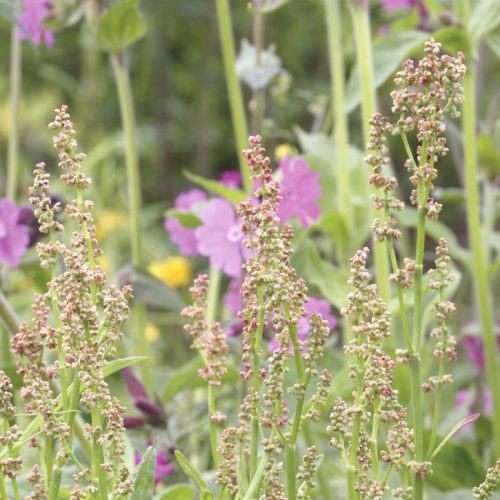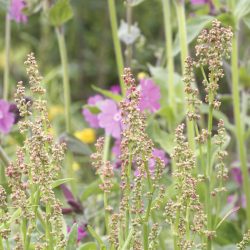Sorrel
Rumex acetosa
The young leaves of the sorrel can be collected throughout the summer. A concoction made from the sorrel takes long to cook, and it must be stirred until the plant has “melted” completely, even for 4-7 hours. Such soup was cooked – sometimes with the angelica – several times in the course of the summer. The sorrel sours the milk, which is why people used to add it to reindeer milk that was preserved in a wooden cask or in a pouch made from the stomach of the reindeer. This kept the milk edible for long. Thus, the sorrel used to be a very important plant for the Sámi. The Sámi from Jukkasjávri told in the 1750s that one of their reasons for migrating to the coast for the summer was that the coast abounded in the sorrel.
The sorrel contains oxalid acid, which may cause damage to the kidneys. Plants that contain oxalid acid should be eaten together with milk products. Today, the sorrel can be eaten, for example, with milk or yoghurt.
The sorrel is a perennial grass that becomes 30-80 cm high. The leaves are arrowy, and the red flowers grow as part of a branchy top inflorescence. The sorrel is a common species almost throughout the Nordic countries; in the Finnish fell region, we find its northern subspecies (ssp. lapponicus). The grass favours meadows and banks.









